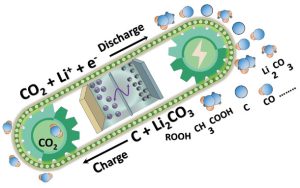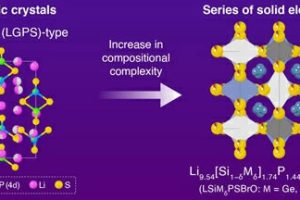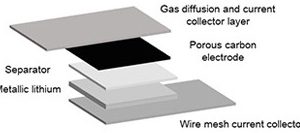
Headline figures are a theoretical specific energy density of 1,876Wh/kg and a ~2.8V discharge potential, but in practical terms the technology has not even reached infancy.
To build a solid foundation for its development, a team of interdisciplinary researchers lead by the University of Adelaide has set out establish a context for further rechargeable alkali metal based carbon dioxide battery research, assessing suitable electrodes, electrolytes and catalysts along the way.
“Specifically, we have figured out that the basic understanding of the electrochemical mechanism is still controversial, and the performance at a high rate is still far from satisfactory for practical application due to the lack of efficient electro-catalysts,” said Adelaide chemical engineer Professor Zaiping Guo. “Despite the challenges, we have to say that, with continuous efforts, practical Li-CO2 batteries with efficient CO2 fixation and high energy storage are achievable.”
“The main concern for a lithium-carbon dioxide battery,” she continued, “lies in the slow kinetics of the electrode reactions, so the next step in the development of lithium-carbon dioxide is to seek an efficient catalyst that can boost the electrode reactions during battery charge and discharge.”
Results of this detailed survey and theoretical study are published in Nano Research Energy as ‘Challenges and prospects of lithium-CO2 batteries‘, which can be read in full without payment.
 Electronics Weekly Electronics Design & Components Tech News
Electronics Weekly Electronics Design & Components Tech News



